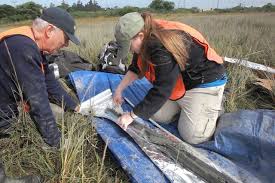Clues from prehistoric droughts and arid periods in California show that today’s increasing greenhouse gas levels could lock the state into drought for centuries, according to a study led by UCLA professor Glen MacDonald.
The study, published today in the Nature.com journal Scientific Reports, looked at how natural climatic forces contributed to centuries-long and even millennia-long periods of dryness in California during the past 10,000 years. These phenomena—sun spots, a slightly different earth orbit, a decrease in volcanic activity—intermittently warmed the region through a process called radiative forcing, and recently have been joined by a new force: greenhouse gases.
As long as warming forces like greenhouse gases are present, the resulting radiative forcing can extend drought-like conditions more or less indefinitely, said MacDonald, a distinguished professor of geography and of ecology and evolutionary biology.
“Radiative forcing in the past appears to have had catastrophic effects in extending droughts,” said MacDonald, an international authority on drought and climate change. “When you have arid periods that persist for 60 years, as we did in the 12th century, or for millennia, as we did from 6,000 to 1,000 B.C., that’s not really a ‘drought.’ That aridity is the new normal.”

